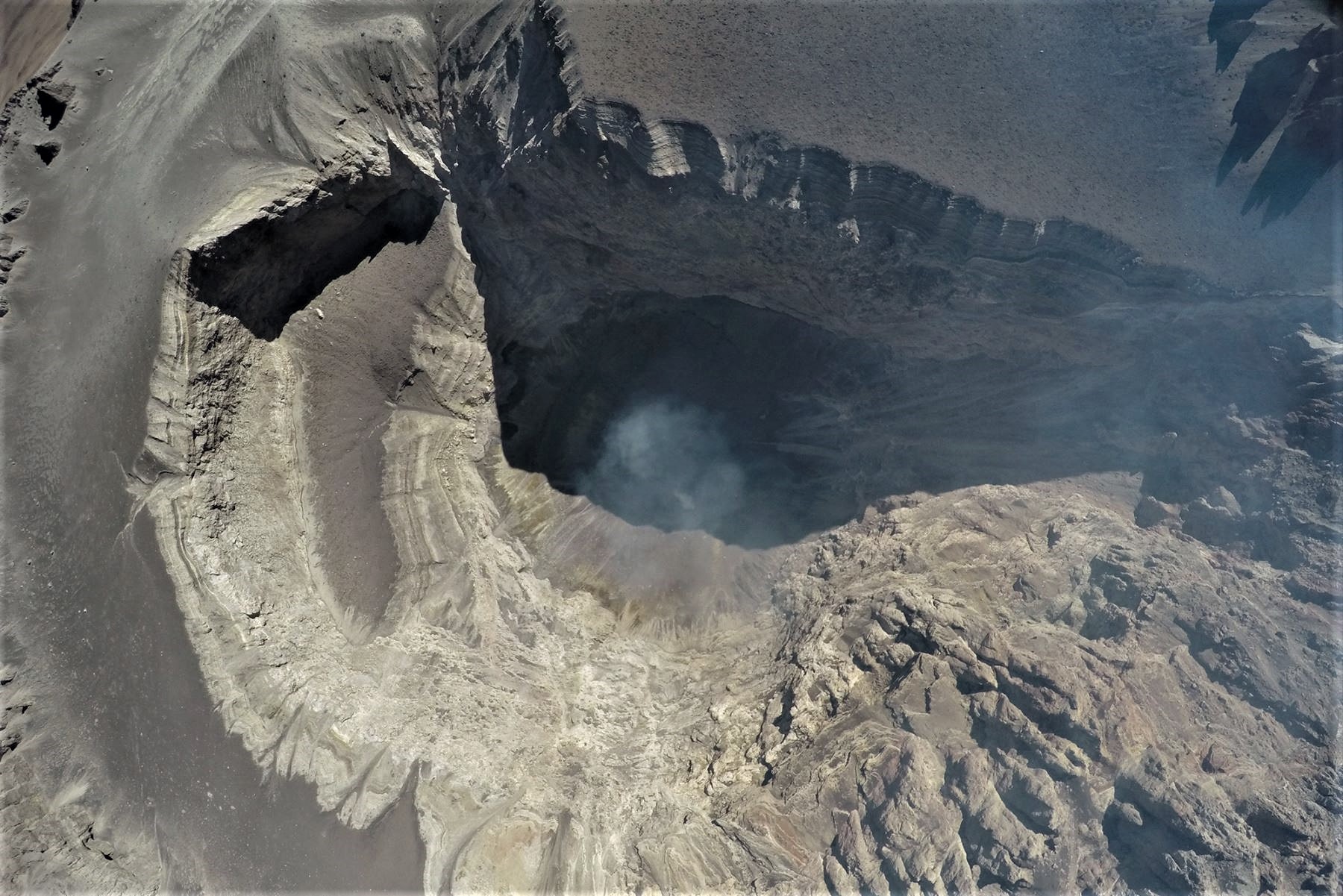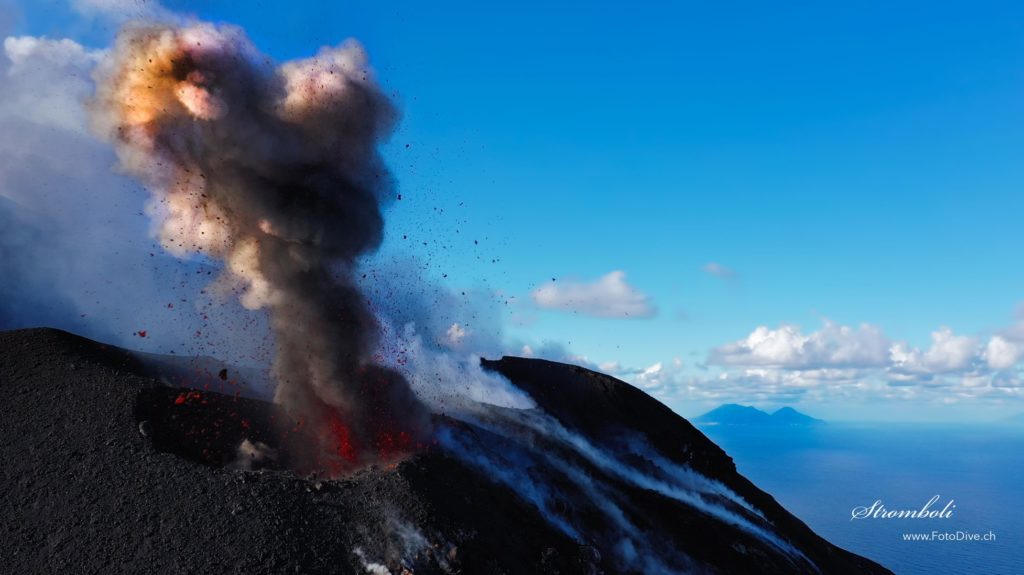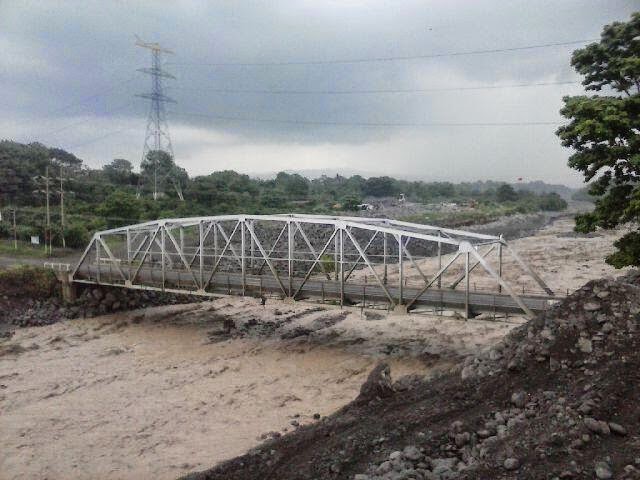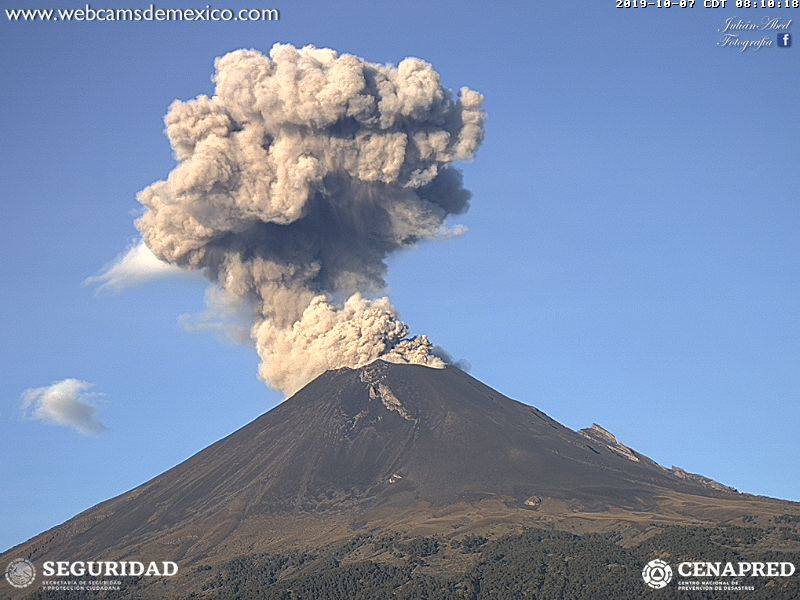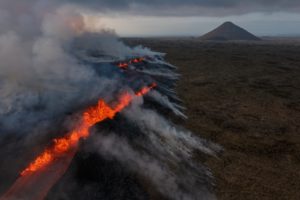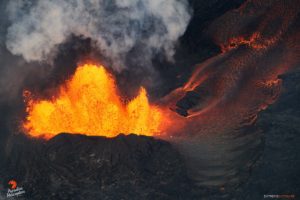October 8 , 2019.
Peru , Ubinas :
Period of analysis: from September 30 to October 6, 2019. Arequipa, October 7, 2019.
Alert level: ORANGE
The Geophysical Institute of Peru (IGP) reports that the Ubinas volcano continues its eruptive process. To date, seismic activity and thermal anomalies have been recorded that would be associated with the rise and proximity of the magma to the surface. In addition, there are slight bluish gas emissions (of magmatic origin) and water vapor, observed through surveillance cameras. Under this scenario, moderate to low explosive activity and / or ash emissions are possible during this week.
Between 30 September and 6 October, the IGP recorded and analyzed 3,769 seismic events associated with the eruptive process of the Ubinas volcano, with predominant seismicity of the volcano-tectonic (VT) type, related to the fracturing of the rock. inside the volcano, with an average value of 313 events per day, all with magnitudes less than M2.2. There has been an increase in the number of seismic signals that would be related to the rise of the magma (hybrid type), which went from 69 events per day to 181 earthquakes during this period. In addition, no volcanic explosion was recorded.
The surveillance cameras recorded continuous emissions of bluish gas (of magmatic origin) and water vapor from a height of less than 1,500 m above the summit of the volcano. The monitoring of the deformation of the volcanic structure, using GNSS data (processed with fast orbits), presents no significant anomalies. The MIROVA satellite monitoring recorded 1 thermal anomaly with a value of 3 MW (on 30/09/2019), linked to the presence of a hot body under the crater of the volcano.
Source : IGP Pérou .
Photo et Video : IGP.
Italy , Stromboli :
Daily Bulletin of 07/10/2019
SUMMARY OF ACTIVITY REPORT.
In light of the surveillance data, we highlight:
1) VOLCANOLOGICAL OBSERVATIONS: Normal explosive activity of Strombolian type accompanied by degassing activities.
2) SISMOLOGY: The seismological parameters do not show any significant changes.
3) DEFORMATIONS: No significant changes to report
4) GEOCHEMISTRY: The flow of SO2 is high. The value of the CO2 / SO2 ratio is medium-low. The helium isotopic ratios remain unchanged for the mean-low values.
VOLCANOLOGICAL OBSERVATIONS:
Despite the presence of discontinuous cloud cover, the analysis of the images available from the surveillance cameras located at 400 m altitude (SQV and SQT) and Punta dei Corvi (SCPT) highlighted the persistence of an explosive activity. Ordinary strombolian on several mouths located in both the North and Central-South zones of the crater terrace. The explosions, of variable frequency and intensity, produce the emission of coarse materials which often fall outside the crater terrace, which are deposited in the upper part of the Sciara del Fuoco and then roll along the slope. towards the coast.
The total number of explosive events in both areas of the crater remained at average values (10 to 15 events / h). The explosions occur in both areas of the crater and are of low energy intensity (less than 80 m in height). The northern zone of the crater terrace emitted mainly coarse materials (lapilli and bombs), while the Center-South zone emitted mainly fine-grained materials.
SEISMOLOGY:
The bulletin is established with data acquired from a maximum of 8 stations. The seismic activity recorded during the last 24 hours has the following characteristics: A seismic signal associated with a landslide has been recorded.
Very long period (VLP) event counting provides an average of about 20 events / hour. The magnitude of the VLP events showed generally low values. The amplitude of the explosion earthquakes showed generally low values.
The amplitude of the volcanic tremor, estimated at the summit station STR1, remained at medium-low values.
Source : INGV Vulcani.
Read the full article : file:///C:/Users/Utilisateur/AppData/Local/Packages/Microsoft.MicrosoftEdge_8wekyb3d8bbwe/TempState/Downloads/BollettinoGiornalieroStromboli20191007%20(1).pdf
Photos : Willie FotoDive .
Guatemala , Santiaguito :
Volcano Special Bulletin.
LAHAR MODERATE IN RIO SAN ISIDRO, TRIBOR OF RÍO EL TAMBOR.
Precipitation over the past few days in the country is currently causing the descent of a moderate lahar on the Santiaguito volcano in the San Isidro River, a tributary of the El Tambor River.
This lahar descends in the form of pulses and carries pasty materials, blocks 1 to 2 meters in diameter, branches and tree trunks. It is 16 meters wide and 1 to 2 meters high and causes erosion around the channel.
The rains that can be generated in the hours that follow around the volcano can cause the descent of lahars in the area, especially in the tributaries of the Samalá River. It is therefore necessary to take precautions with the vehicles on the Castillo Armas Bridge and in the flood areas such as the El Niño Loop and others.
Source : Insivumeh.
Photo : Auteur inconnu.
Mexico , Popocatepetl :
Summary of the last 24 hours, October 7th at 11:00 am (October 7th at 16:00 GMT).
Through the surveillance systems of the Popocatepetl volcano, 153 exhalations have been identified, accompanied by gas and light amounts of ash. In addition, three moderate explosions were recorded at 00h17, 03h13 and 08h06, incandescent fragments were observed on the slopes of the volcano. There were also three minor explosions, yesterday at 14:12, the two remaining today at 13:39 and 15:45, where incandescent fragments were observed inside the crater. In addition, 504 minutes of tremor were recorded.
At the time of this report, the volcano is observed with a scattered emission in a South-West direction.
CENAPRED urges NOT to approach the volcano and in particular the crater, because of the risk of falling ballistic fragments, and in case of heavy rains, to stay far from the bottom of the ravines because of the risk of mudslides and debris.
The warning light of Popocatépetl is in YELLOW PHASE 2.
Source : Cenapred.
Photo : Cenapred .

